Just Closed In Milan: Young Artists, Sung Spotlights & Century-Spanning Mastery
Three great shows came to an end in June. They include heartfelt video, Tarot type beat painting, and pure vibes in general.
Gabrielle Goliath: Elegy
I was excited to see Gabrielle’s (Millennial, South African) show in Milan as she is currently showing at the 60th International Art Exhibition of La Biennale di Venezia as well: She participates with Personal Accounts (2024) a multi-channel video installation featuring people who experienced violence. But instead of subjecting the participants to the viewers’ insatiable curiosity and desire to see and hear about foreign suffering and trauma, she cuts out all speech and leaves only the sounds in between, revealing what is kept unsaid either by choice or censorship.
For her show at Raffaela Cortese, Gabrielle took on another angle at violence and circled back on an ongoing projcect she started back in 2015. She presents a three part exhibition featuring videos and photographs. The show is divided in three spaces across the street, I wonder whether it’s just a question of logistics or whether this rite of passage was intended exactly this way.
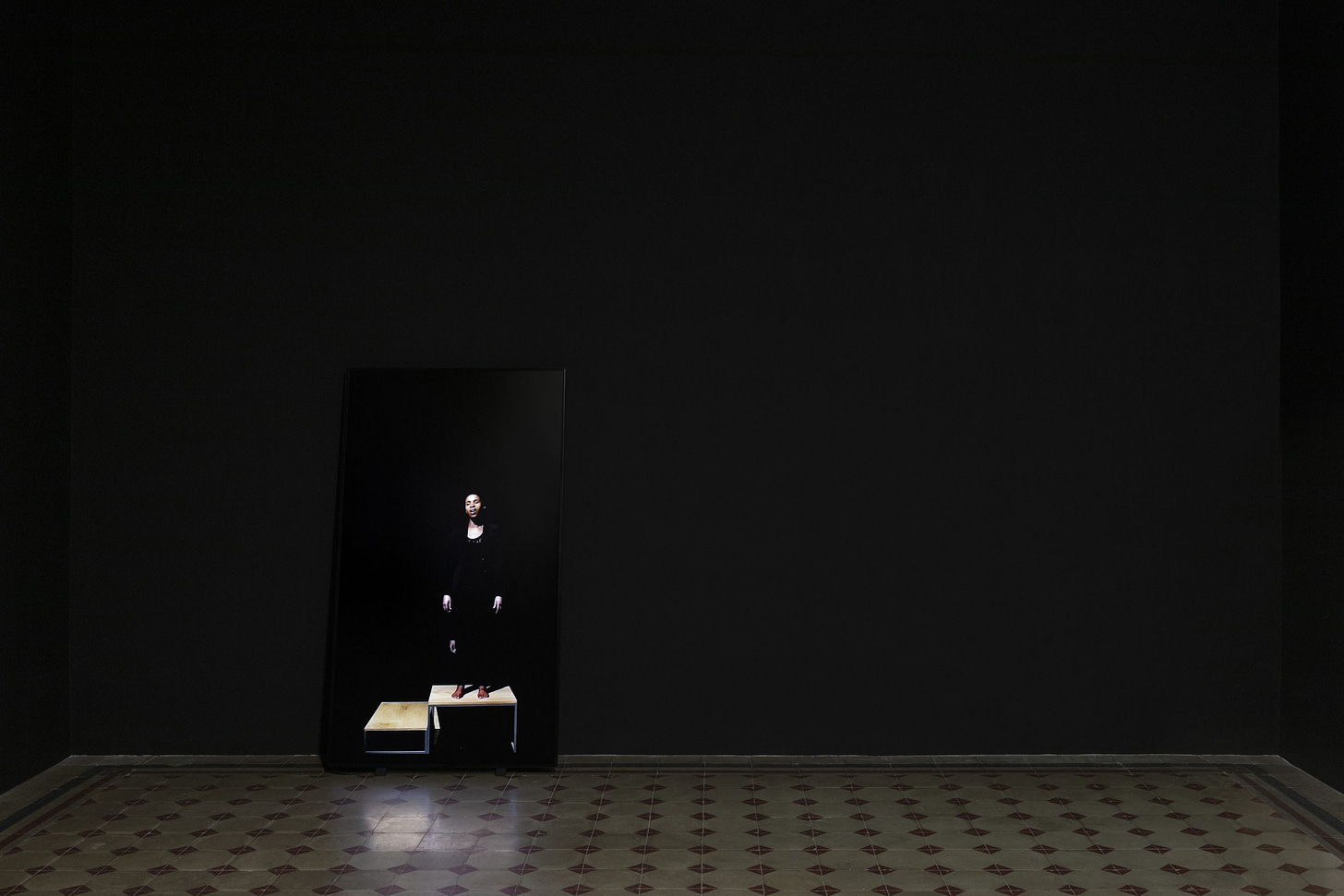
Unlike her presentation at the Biennale submerged in varying shades of blue, Gabrielle opts for pitch-black here. These performances were filmed all around the world. In each city, seven female singers all dressed in black sing one note simultaneously. The sound is not so much angelic as rather haunting in its intensity. They take turns standing on a two-step podium. Actually, it’s different ones when I compare them. They get into the glaring spotlight for a couple seconds only to descend and disappear back into the dark. They move slowly, never interrupting their singing which lasts one hour for every performance.
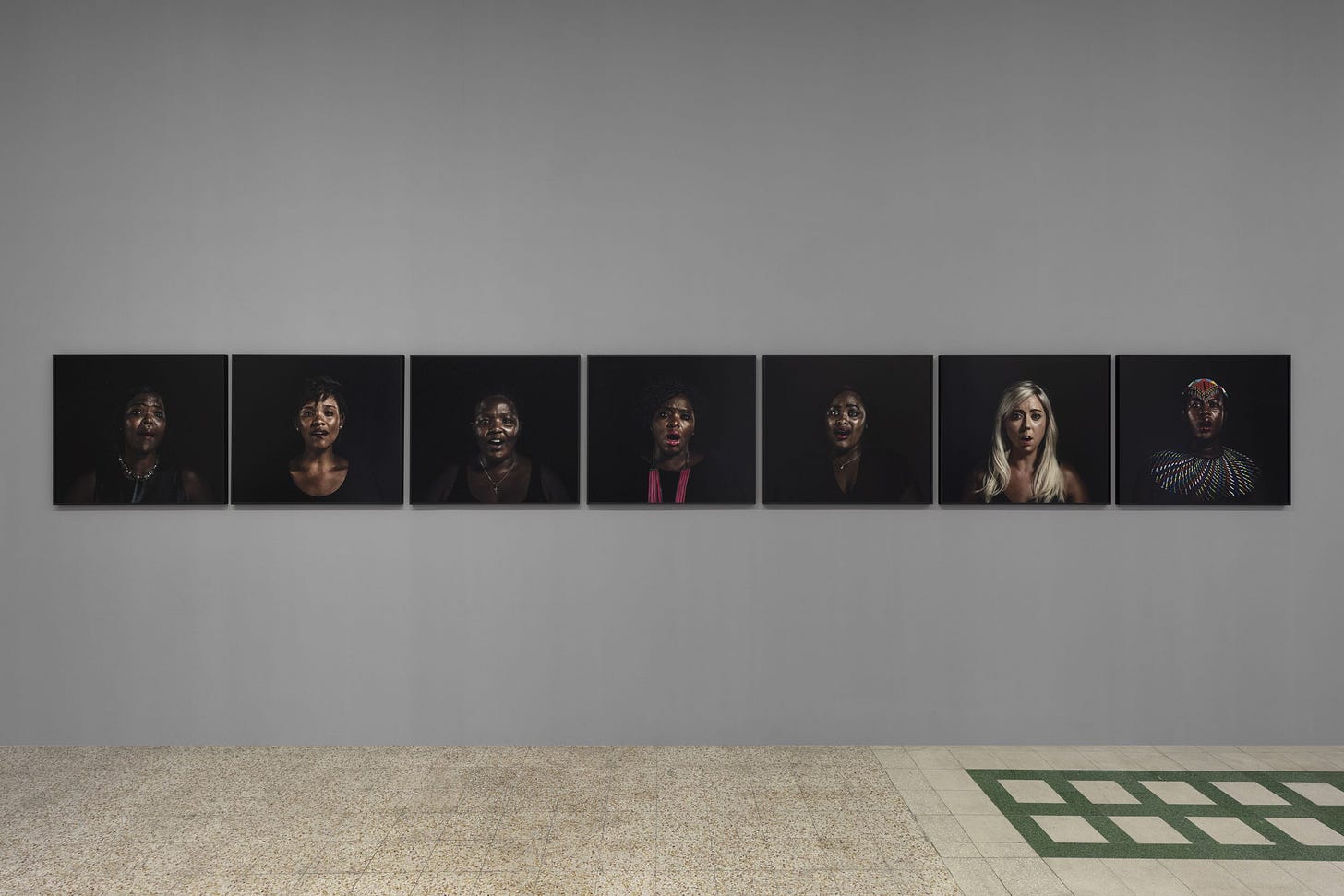
Each performance commemorates the life of a woman or person of the queer community taken away by patriarchal and sexist violence in South Africa. In every room, stacks of thick dark paper are neatly displayed on a table. Each one is a tribute written for a commemorated person of the performance. One is written by parents grieving for their daughter Hannah, not exposing the circumstances of her death. One remembers the life of enslaved Louisa van de Caab who was murdered in 1786. Gabrielle wrote a tribute to Novulo Swelindawo, who was murdered for being an openly lesbian woman. Her partner was present during the performance in Cape Town in 2017, months barely after she lost her loved one.
The last room exhibits square shaped photographs of seven performers. Set against a pitch black background as in the videos, they are frozen in singing. Their faces distorted not only by effort to hold the note, but the grief the note is dedicated to, a painful outcry of sorrow.

Raffaela Cortese, Via A. Stradella 7, 1, 4, 20129 Milan, April 5 through June 30, 2024
Alessandro Sicioldr: Il Sonno Aureo
Finally, somebody who knows what they are doing and not just another copycat, IYKYK. Look at the glossy surfaces, the delicately applied oil paint, the nuanced references to various art historical styles turned into something of its own. Chef’s kiss! Alessandro (Millennial, Italian) translates the styles and techniques of century-old art for a Modern experience that is separated from the spiritual intensity of the past. The result is a surreal familiarity.
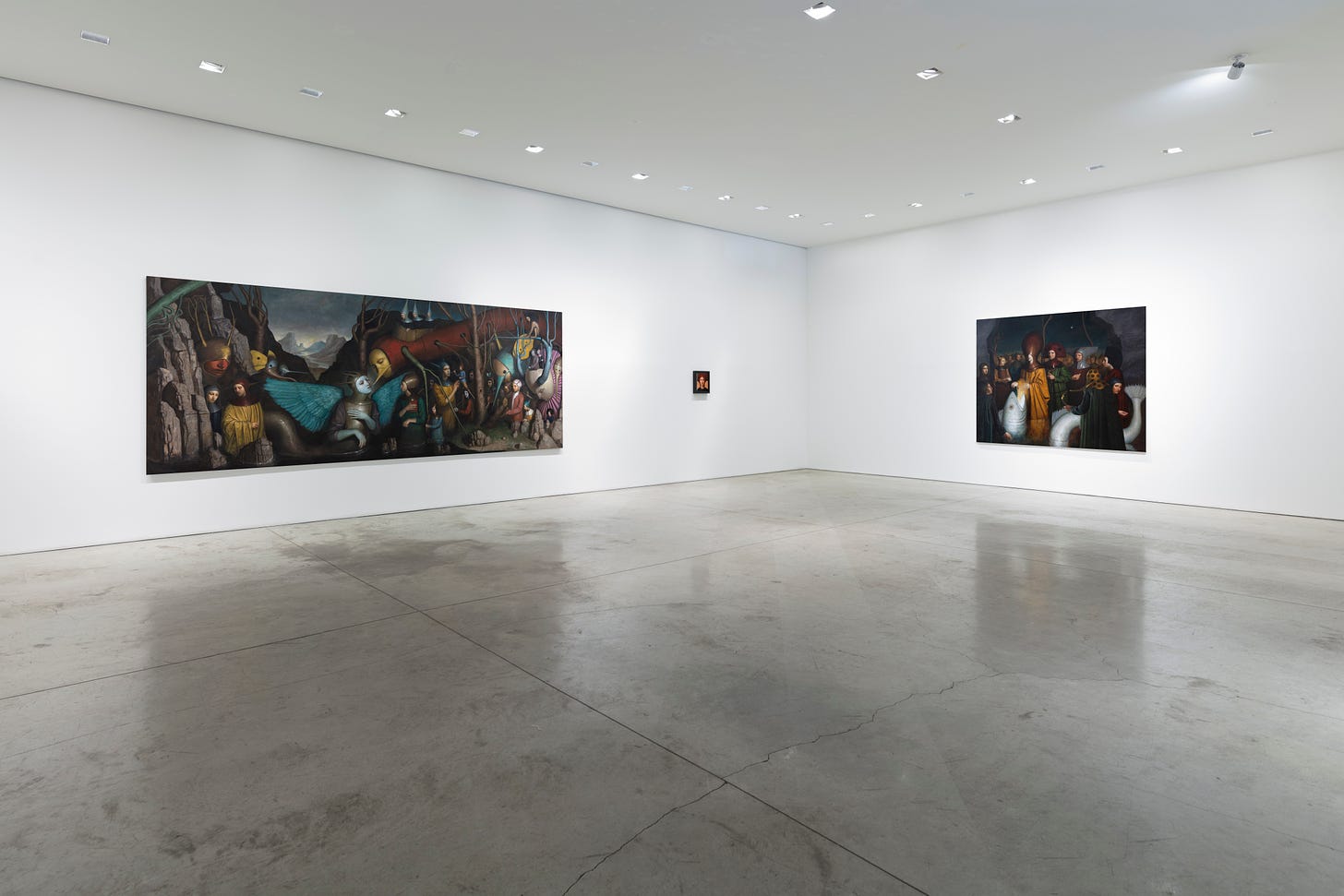
The scale of Alessandro’s work ranges from small devotional icon to grand altarpiece. The vibes are culty, elaborately dressed initiated priests and masked religious servants gather in prayer, adoration, and service, exchanging hushed glances or breaking the fourth wall altogether with a look outside the painted realm. Sphinxes and divine messengers sneak in here and there. Why is there not a single cherub? Can you imagine how hard a biblically accurate cherub would go in Alessandro’s paintings?
Alessandro layers art historical styles that are related to each other: Surrealism often drew from the uncanny details of Medieval Art while the Pre-Raffaelites were in awe of Medieval idealization of spirituality. He reinvents Flemish and Italian Renaissance landscapes for his backgrounds – take the clouds and accurately rendered mountains in Il Santo [The Saint] (2023) for example – and sometimes adds the darkness of Baroque chiaroscuro paintings to his occult rituals as in La Santa [The Female Saint] (2023). He often uses the hierarchical scaling of Medieval art that enlarges figures according to narrative importance, not optical distance.
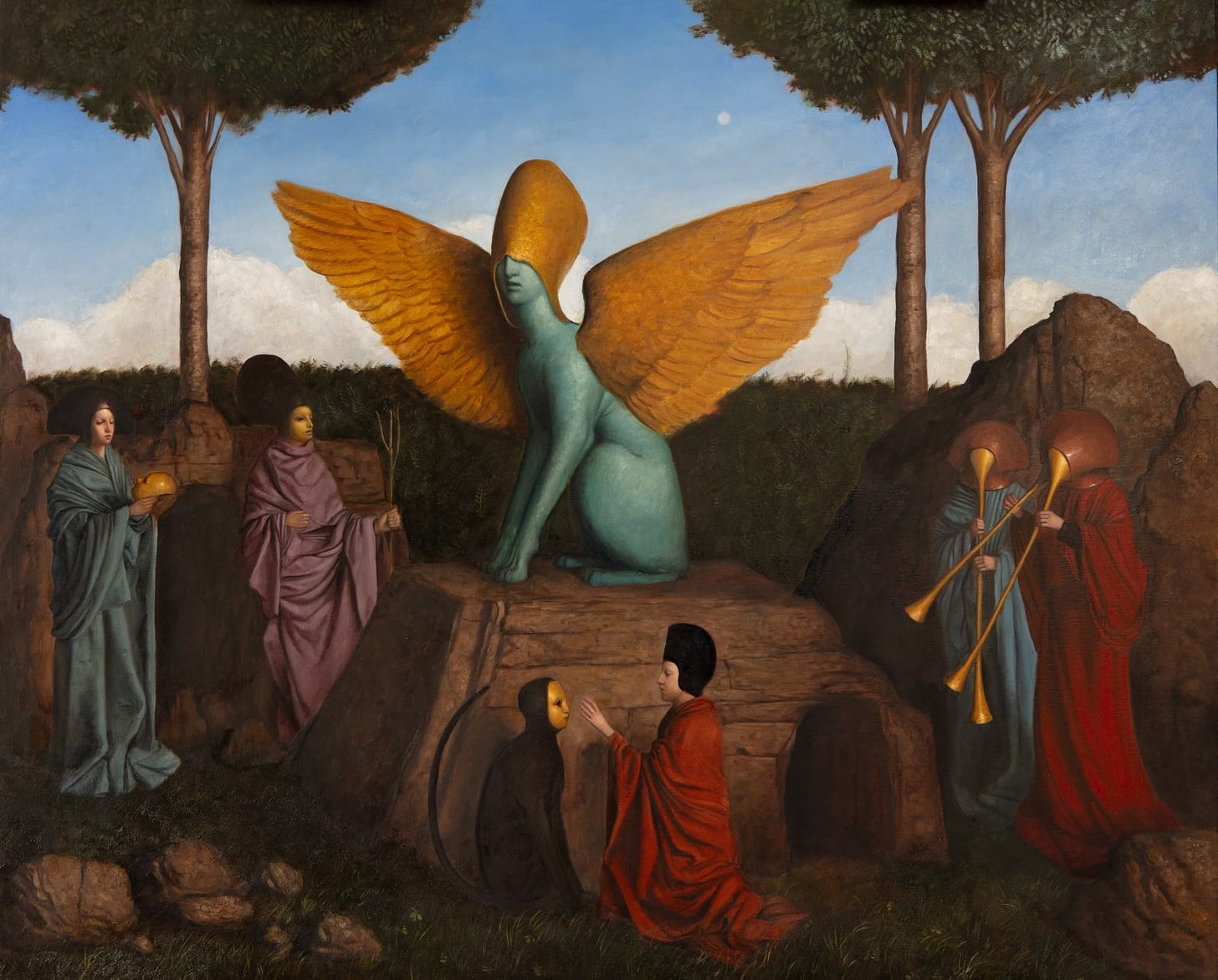
Il Canto dei Folli (2020-24) is a 2 meter long panoramic piece of armored birds and tree branch limbs. They mingle among rock formations set against a dark sky announcing a storm. A blue angel in heavy armory and a golden-red beaked creature lean in to exchange a chaste kiss. Alessandro’s patchworked beings remind me of those in Hieronymus Bosch’s (1453-1516, Flemish) right panel of Hell in his Garden of Earthly Delights (1490-1500). Magic, the occult, and the mythical mingle in suspicious tension that is never fully released.

Primo Marella Gallery, Viale Stelvio 66 (corner Via Valtellina), 20159 Milan, April 23 through June 12, 2024
Le Pleiadi
I came across Candy Snake Gallery coincidentally and it’s now definitely on my radar. The title refers to the Pleiades, a star cluster containing (I swear I’m not making this up) “hot middle-aged B-type stars”, but apart from that I don’t really get how it relates to the exhibited works. Especially because the Pleiades are also known as the Seven Sisters but the show doesn’t feature seven artists. It’s 12 artists exhibiting with 30 smol bite-sized works that I’d just love to put in my tiny silly shopping cart.
I loved Riccardo Albiero’s (Millennial, Italian) painting Everytime (2024) of a borzoi dog, its long muzzle tied by a bull thistle, which goes into a rather grungy direction than the borzoi memes I love and cherish. I noticed on his Instagram that he paints borzois quite often (love that) and that he opts for techniques like oil and egg tempera, often on wood. The result is a hazy texture that adds more mystery to his already mysterious subjects (it’s giving dark academia, I will not elaborate further). Also a fan of Golden Fangs (2023): The sharp dog teeth are isolated from a body, the wide open jaw exposing the threatening flashy fangs against darkness interrupted by glimmer.
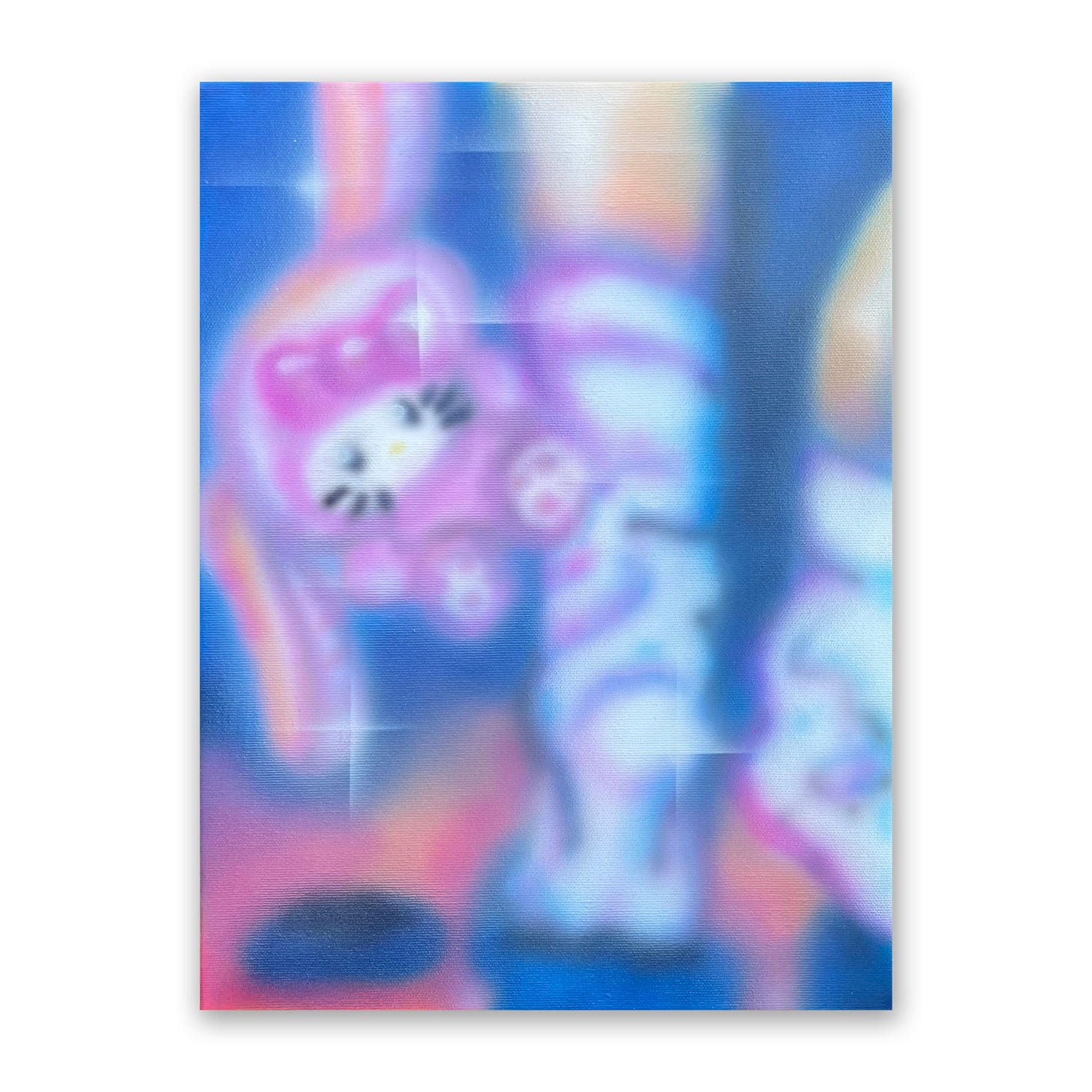
Francesca Vanoli’s (Gen Z, Italian) paintings look like I’m watching a zoomed in close-up of a cartoon or anime but I forgot my glasses so it’s blurred. It’s glittery, shiny, sparkly. Both paintings presented are titled Chaucun souffre à sa manièr [Everyone suffers in their own way] (both 2023). One is a close up of a highly saturated face in manga style while the other focuses on a Hello Kitty bag dangling at the feet of the wearer. I’m surprised that it’s actually acrylic and not spray paint.
Wang Jundi’s (Millennial, Chinese) paintings are aggressively pasty. I love how the burnt out cigarettes in Sei triste? Fuma pure [Are you sad? Smoke away] (2023) are just thick ochre and white oil smudges on a rather abstract background, carried away by the stream.
From Margherita Mezzetti’s (Millennial, Italian) work, I especially enjoyed her two works titled Till I’ll meet you again (both 2023). They are close ups of female-read bodies covered in bright blue and pink hair. The hair color is repeated in the 3D printed ornamental corners of the paintings. I love how the hair adds abstraction to the otherwise figurative motive.

candy snake gallery, Via Luigi Porro Lambertenghi 6, 20159 Milan, May 23 through June 20, 2024
I saw over 20 shows on my last trip to Milan, so more reviews are in the making. Meanwhile, you can have a look at the Milan section of my blog to learn about past shows I’ve seen.
I am in love with Milan’s art scene. What’s your impression? Let me know in the comments. And if you liked this break-down, like the post and share with someone who might be interested in what’s going on in Milan artwise!
See you soon!!!
Jennifer
The Gen Z Art Critic


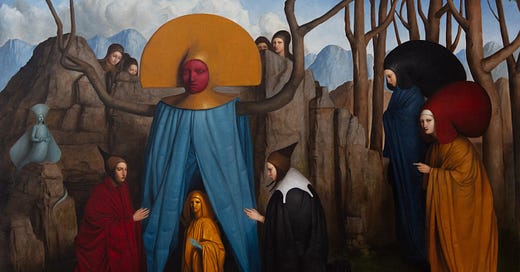


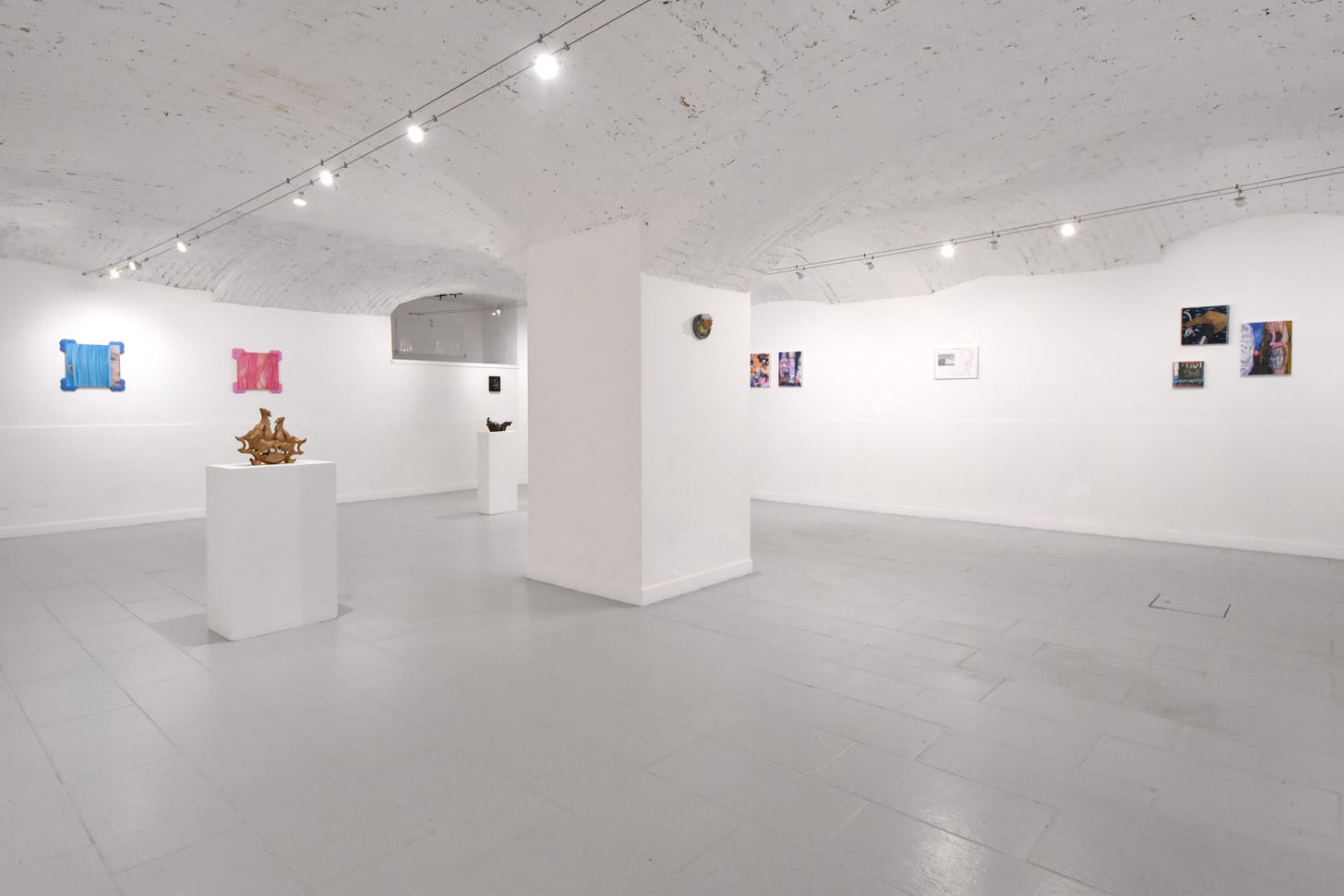
Yet again, such a good read. I just left the film festival Cinema Ritrovato in Bologna, where the main focus of the program is film restauration. I saw so many movies, in which especially women experience violence or are touched without consent. It made me angry, because even if the movies are from a different time, I wondered: Do we still need to display such violence under the cover of art?
I don’t care how well the restauration or the camera perspectives were, because the celebration of these things feels like also celebrating the violence depicted.
Long story short, the timing of me reading about Gabrielle Goliath’s work couldn’t be better. It got me really curious and I hope some research will lead to maybe being able to see clips of her videos and see how she uses the medium of film to deal with violence against people. That being said, thanks for describing it so well, I already got a good insight without seeing the work myself.